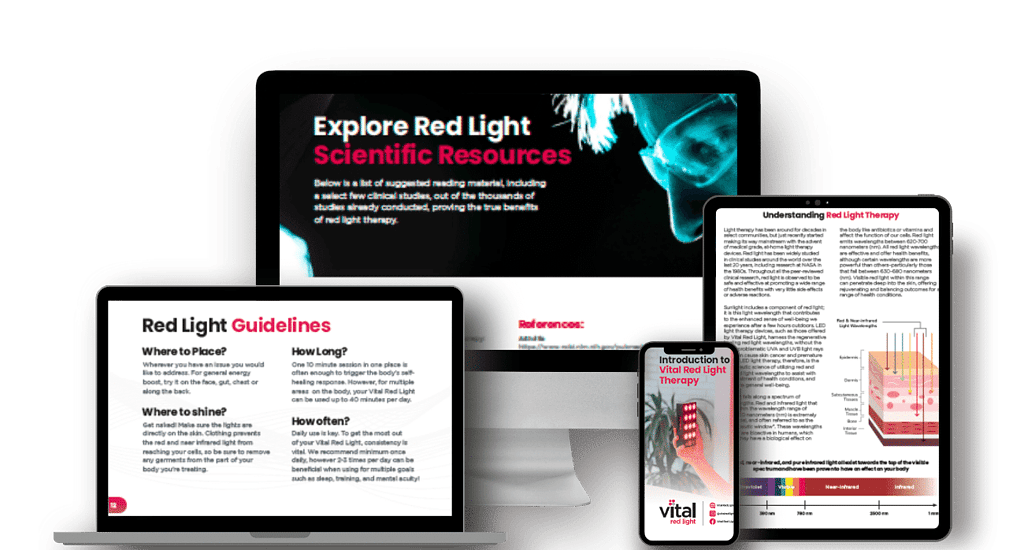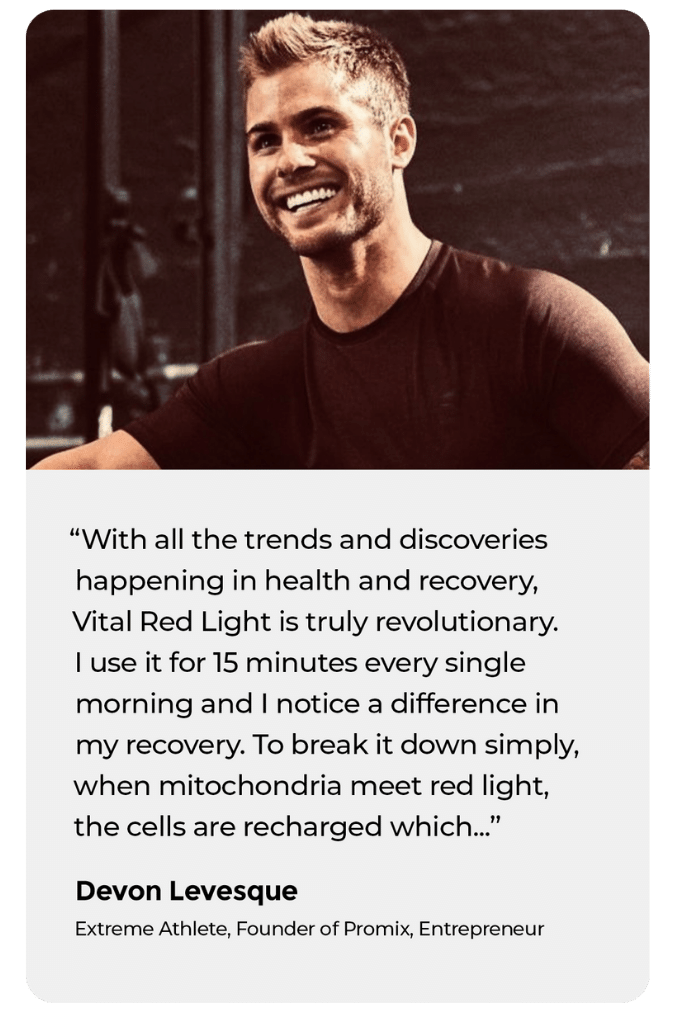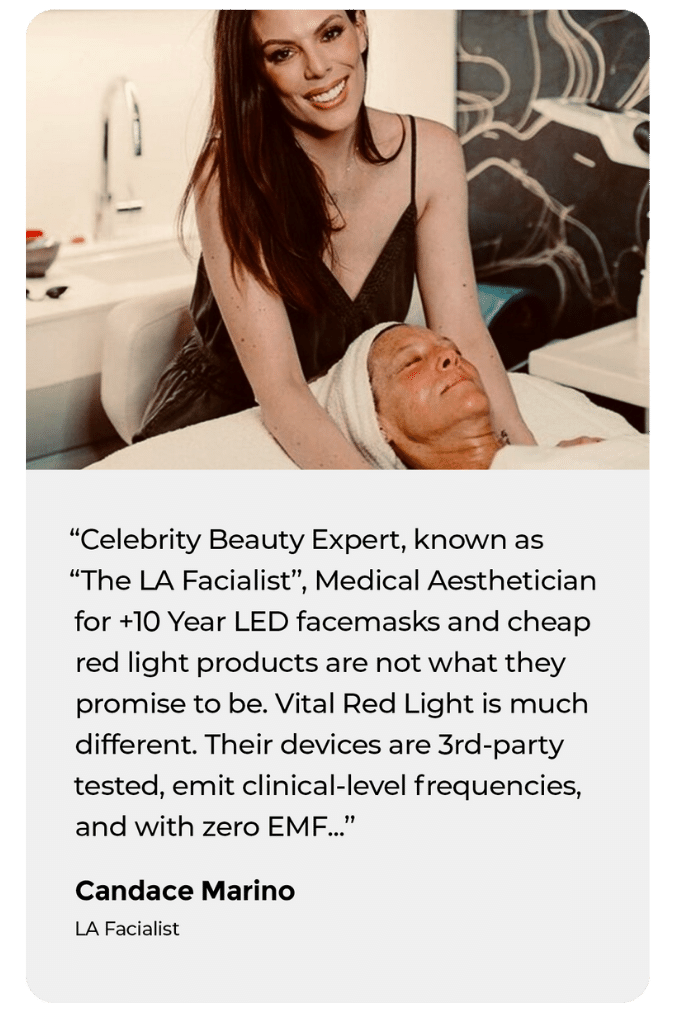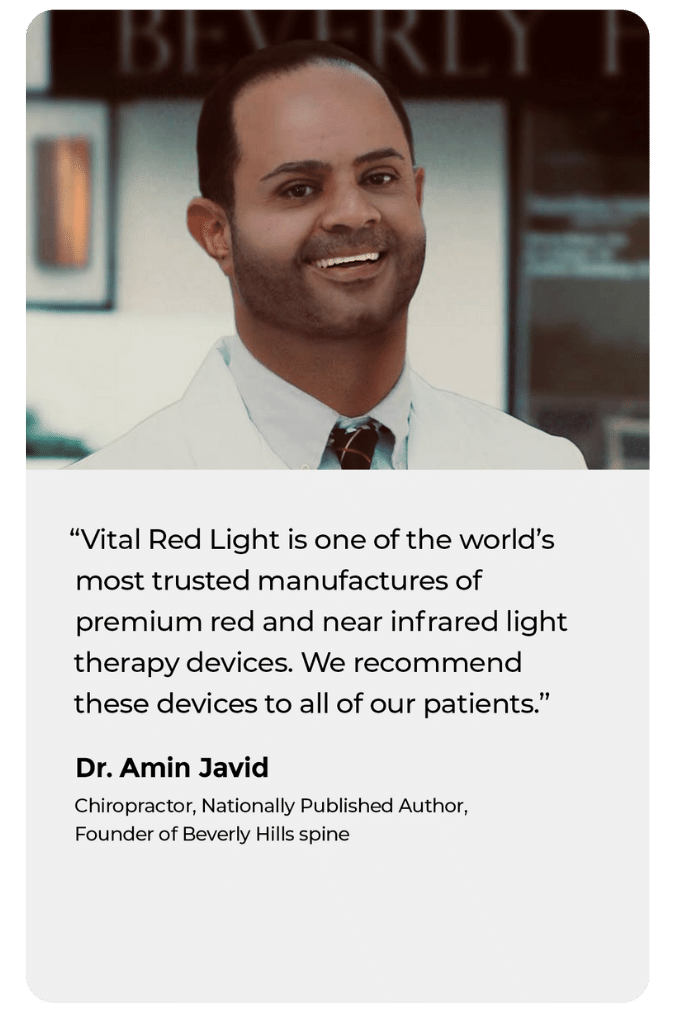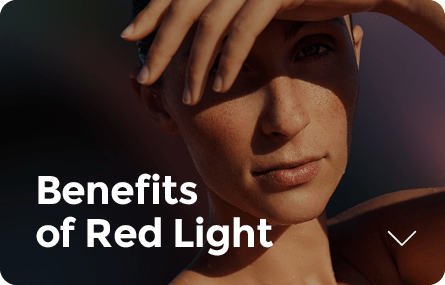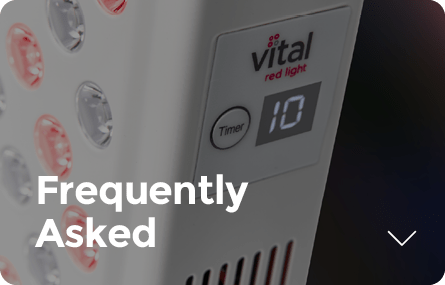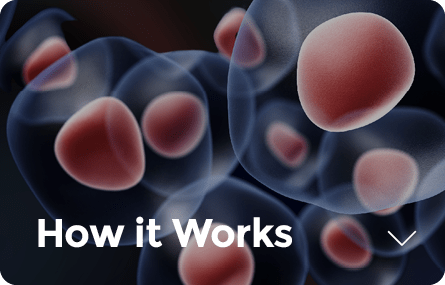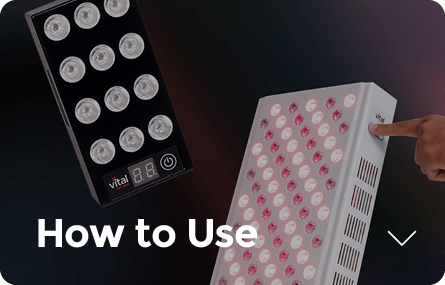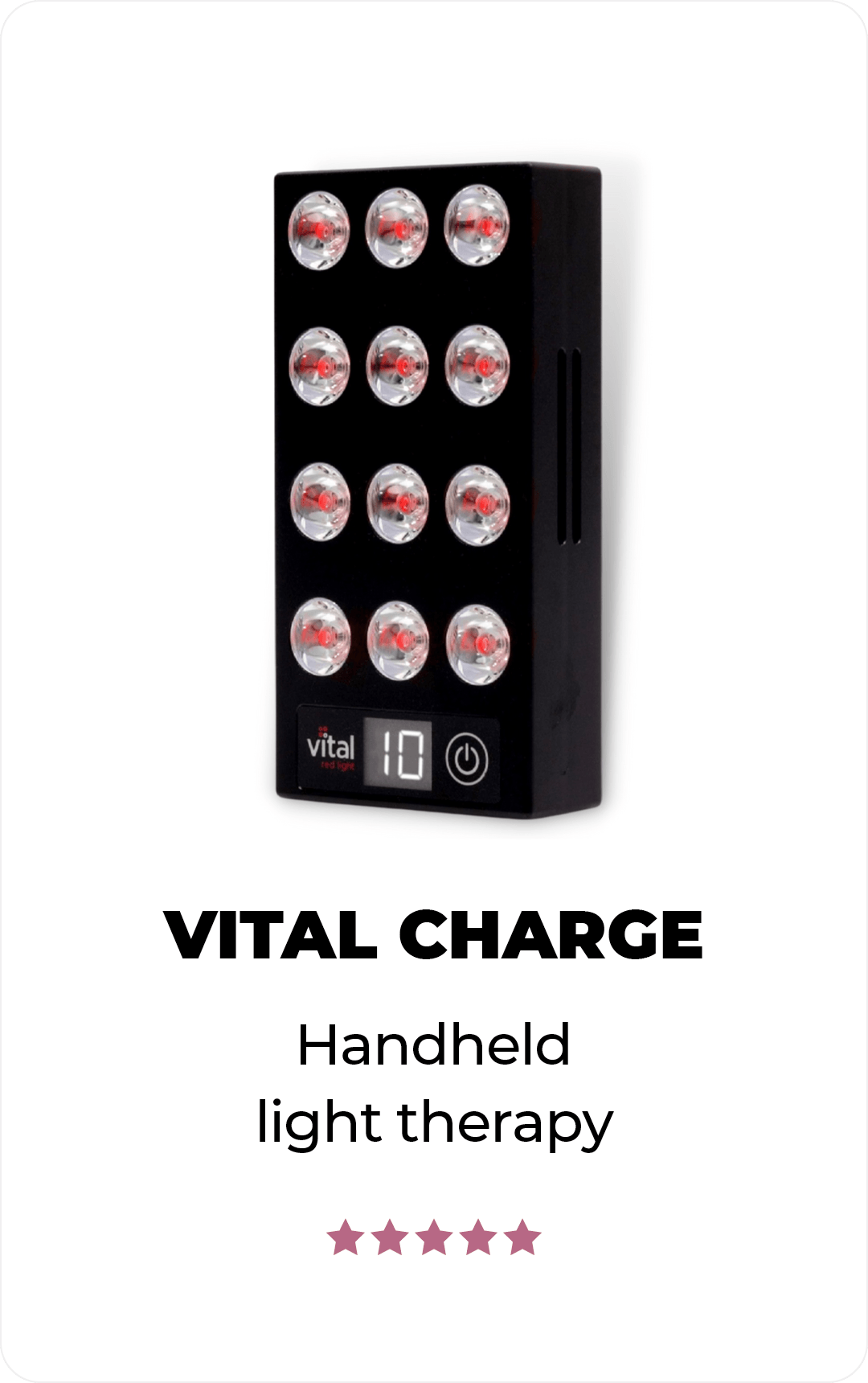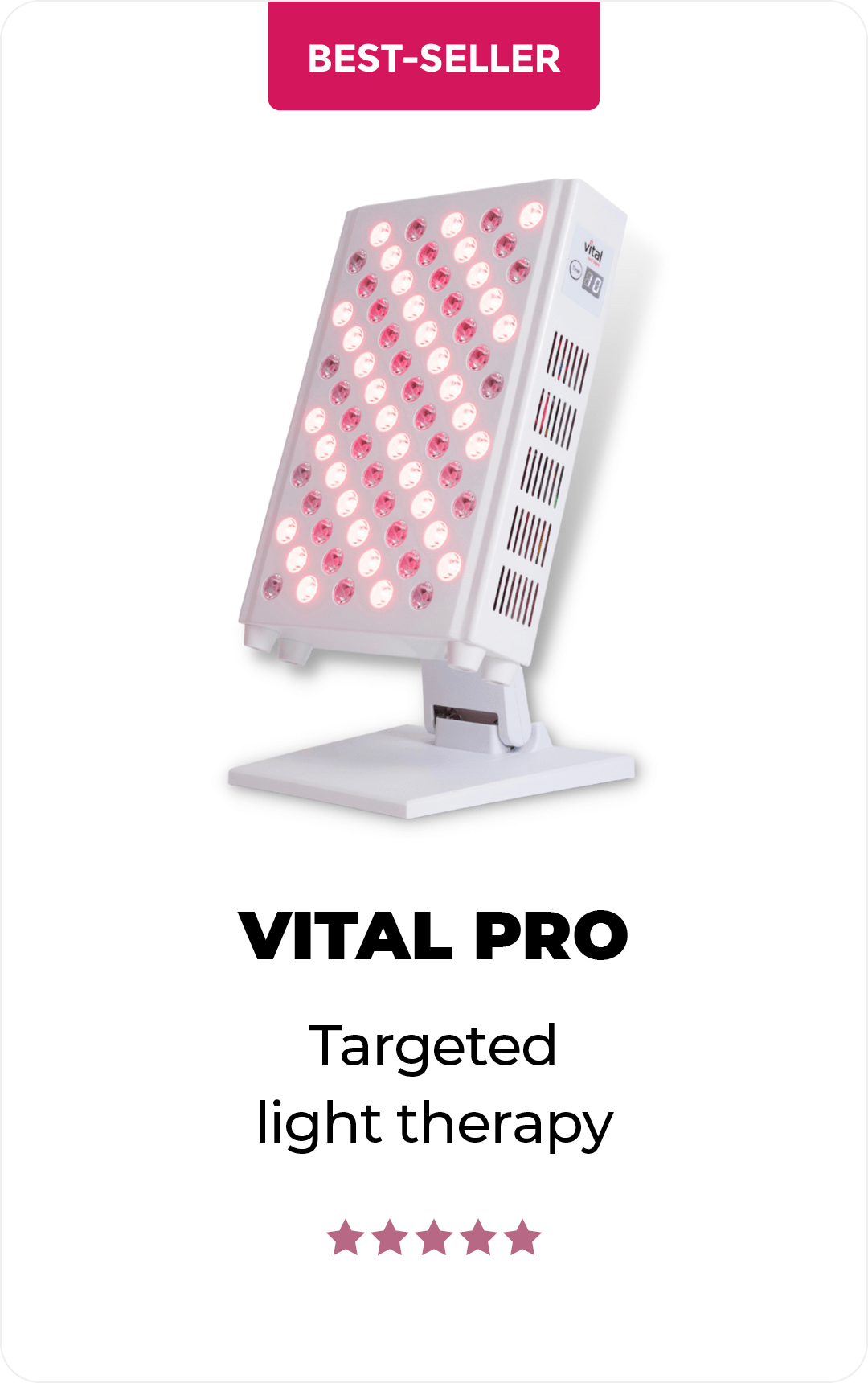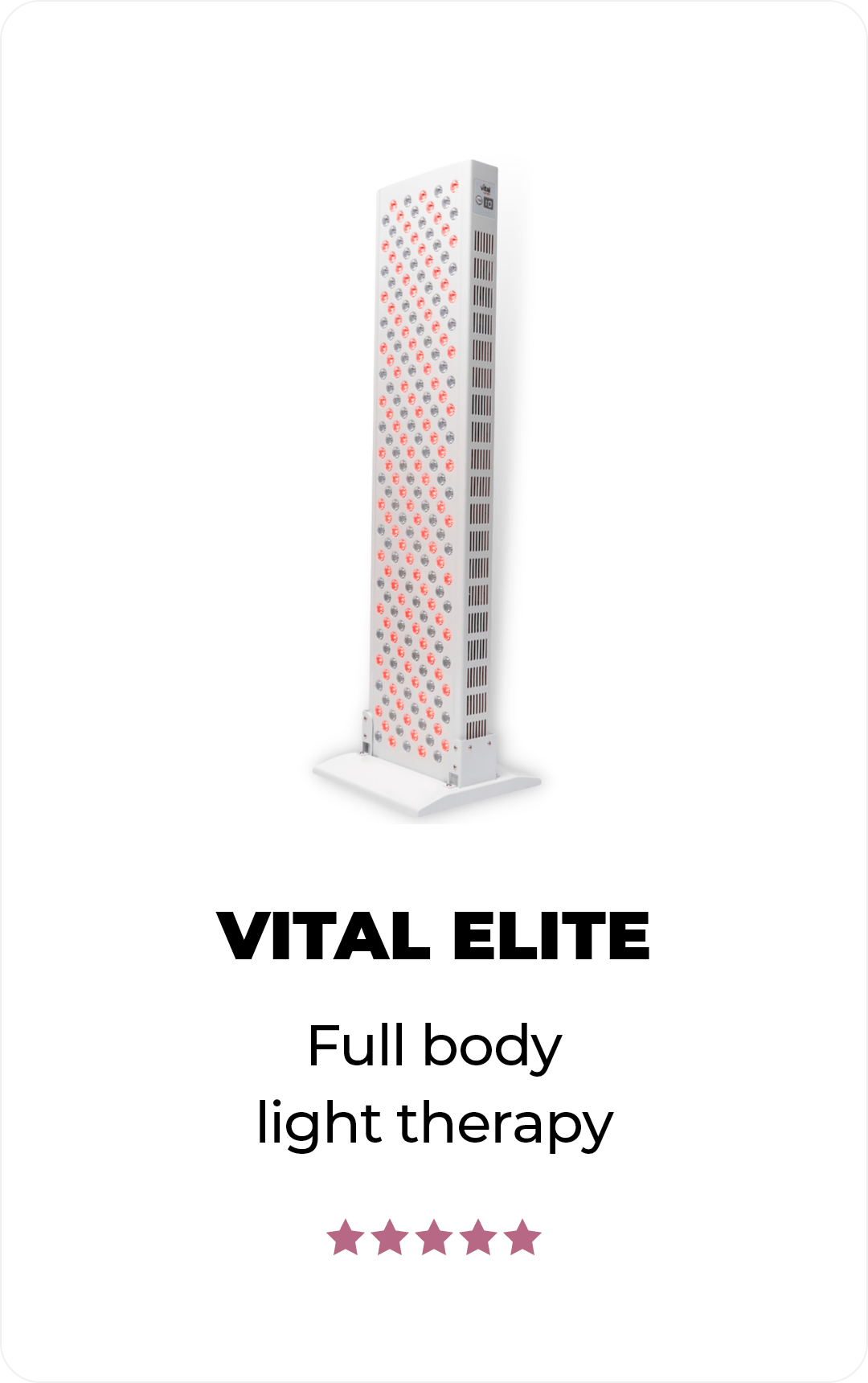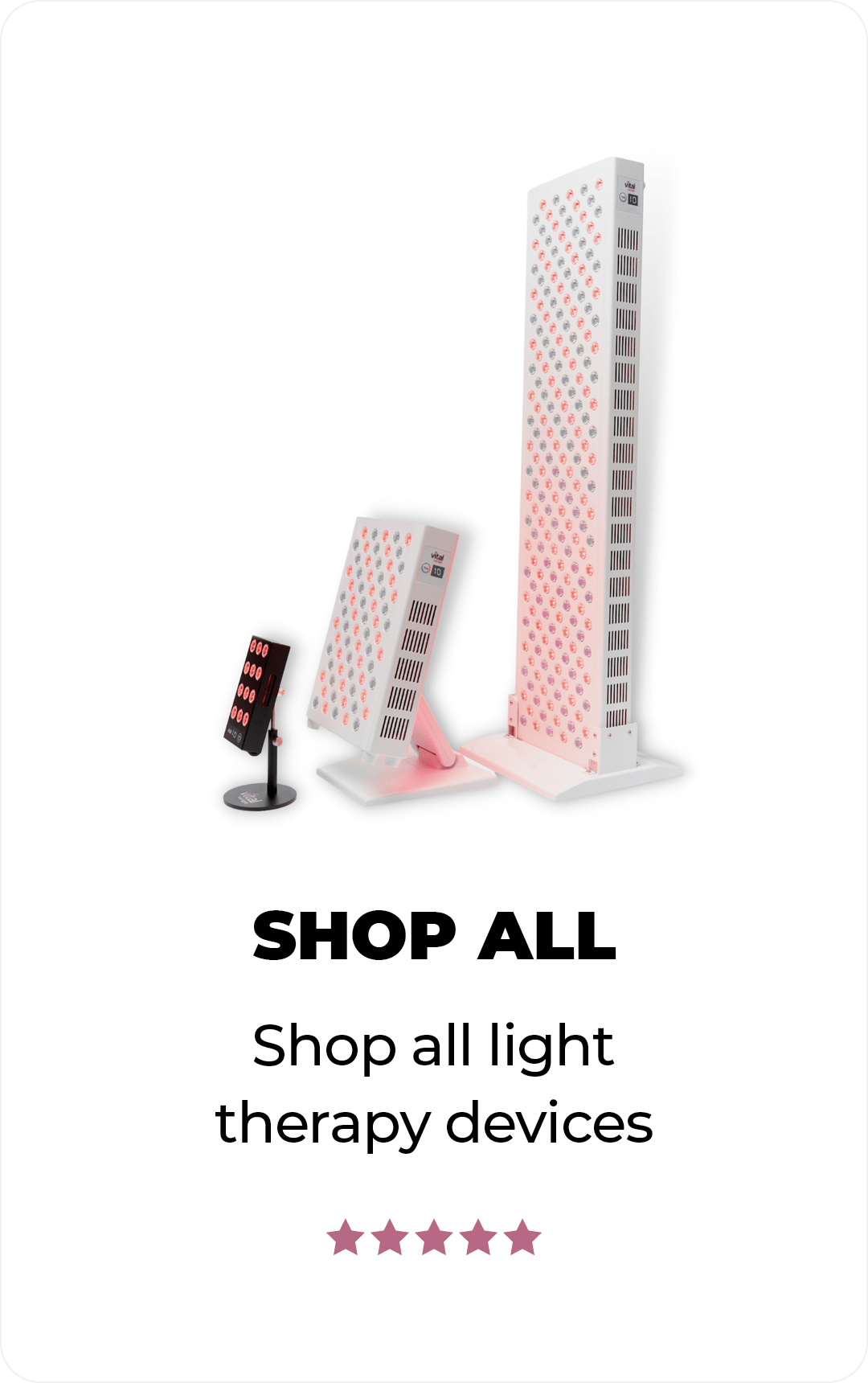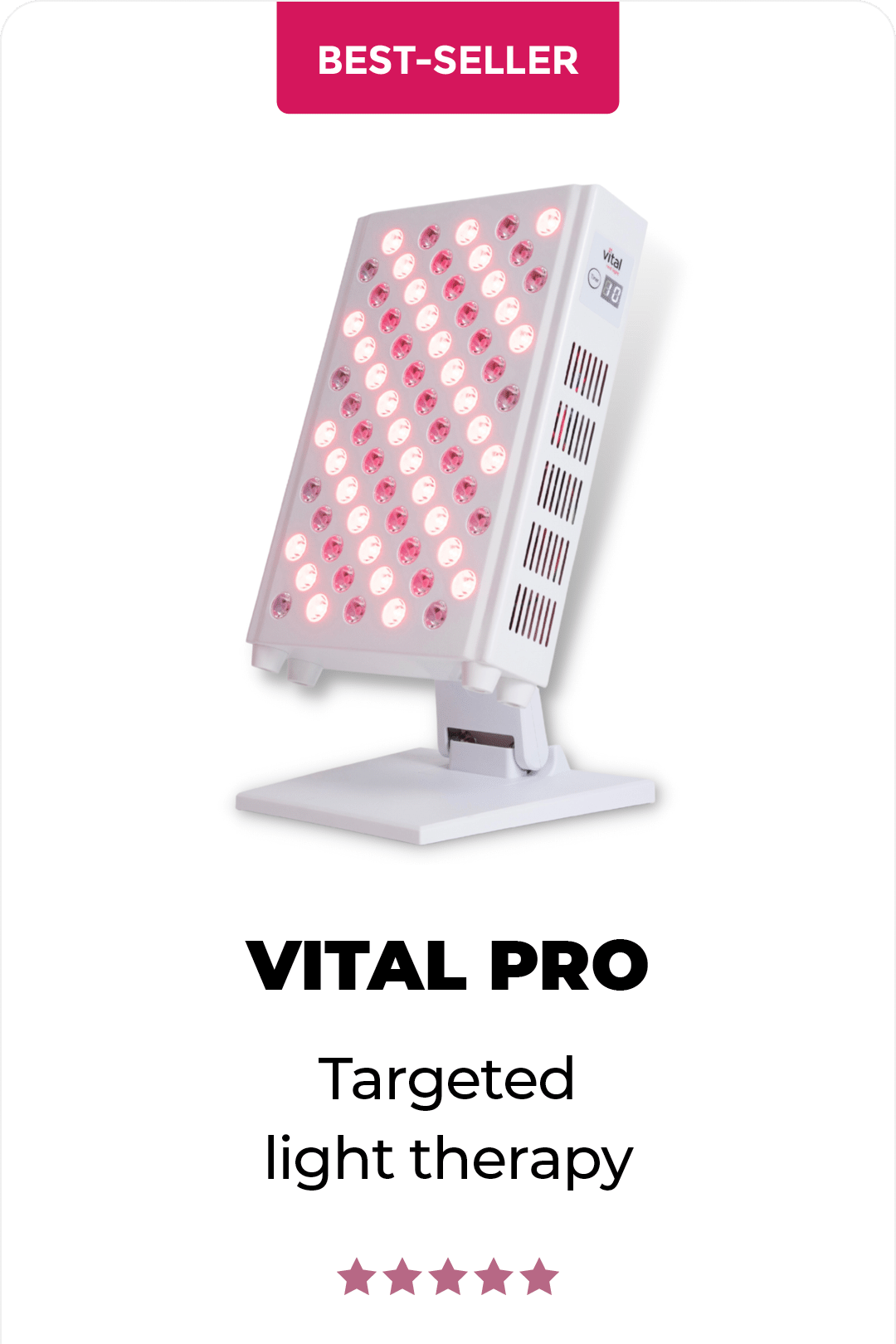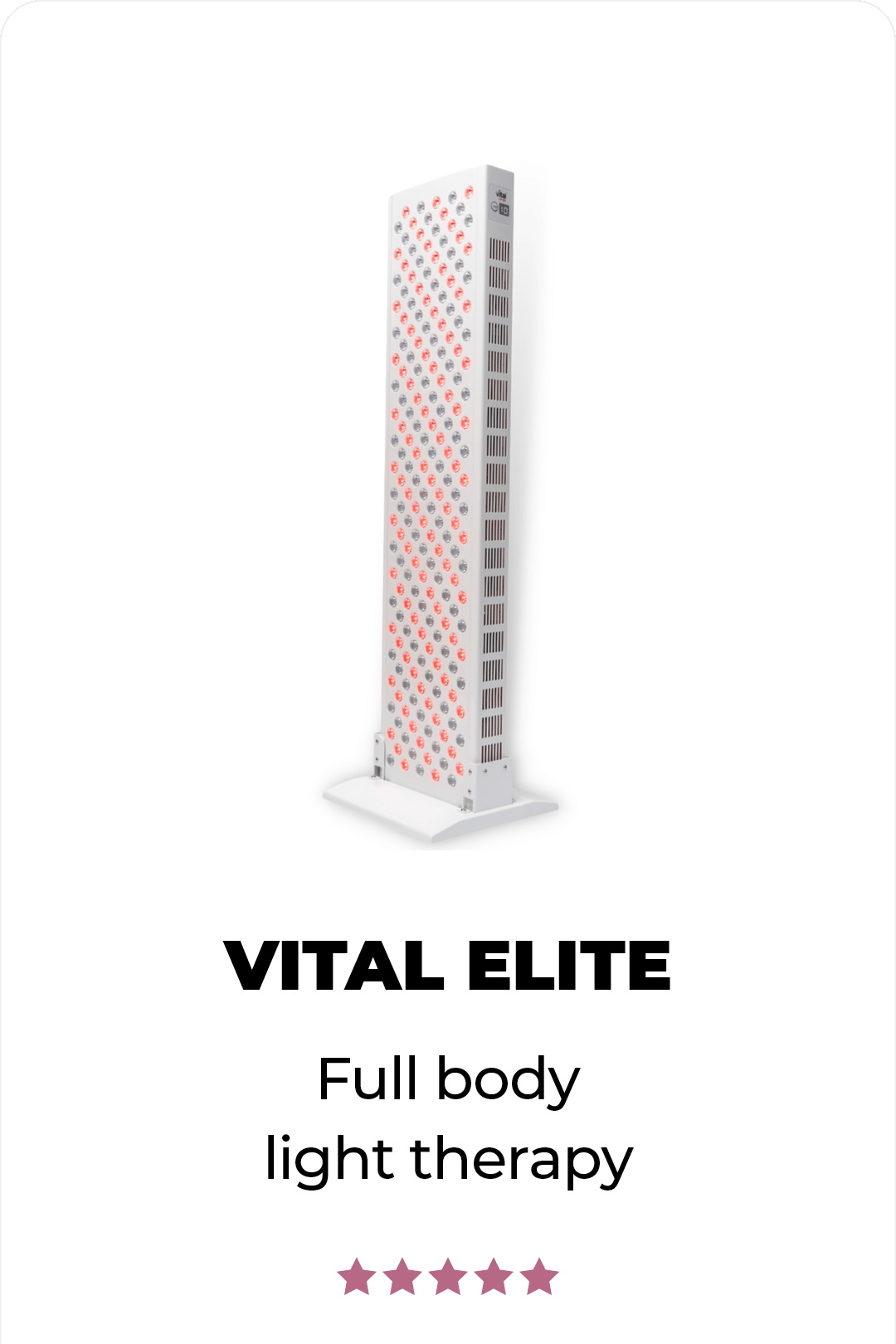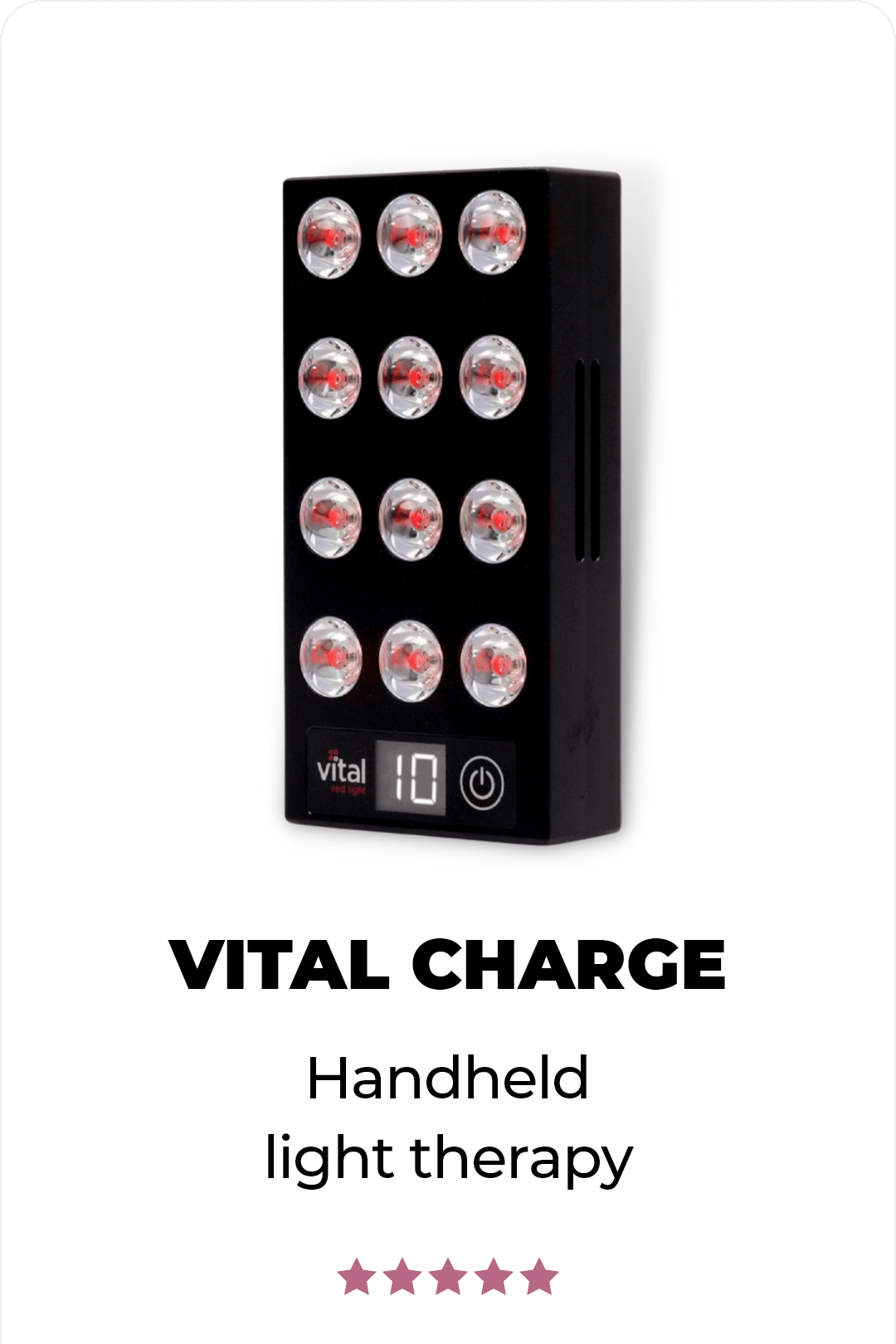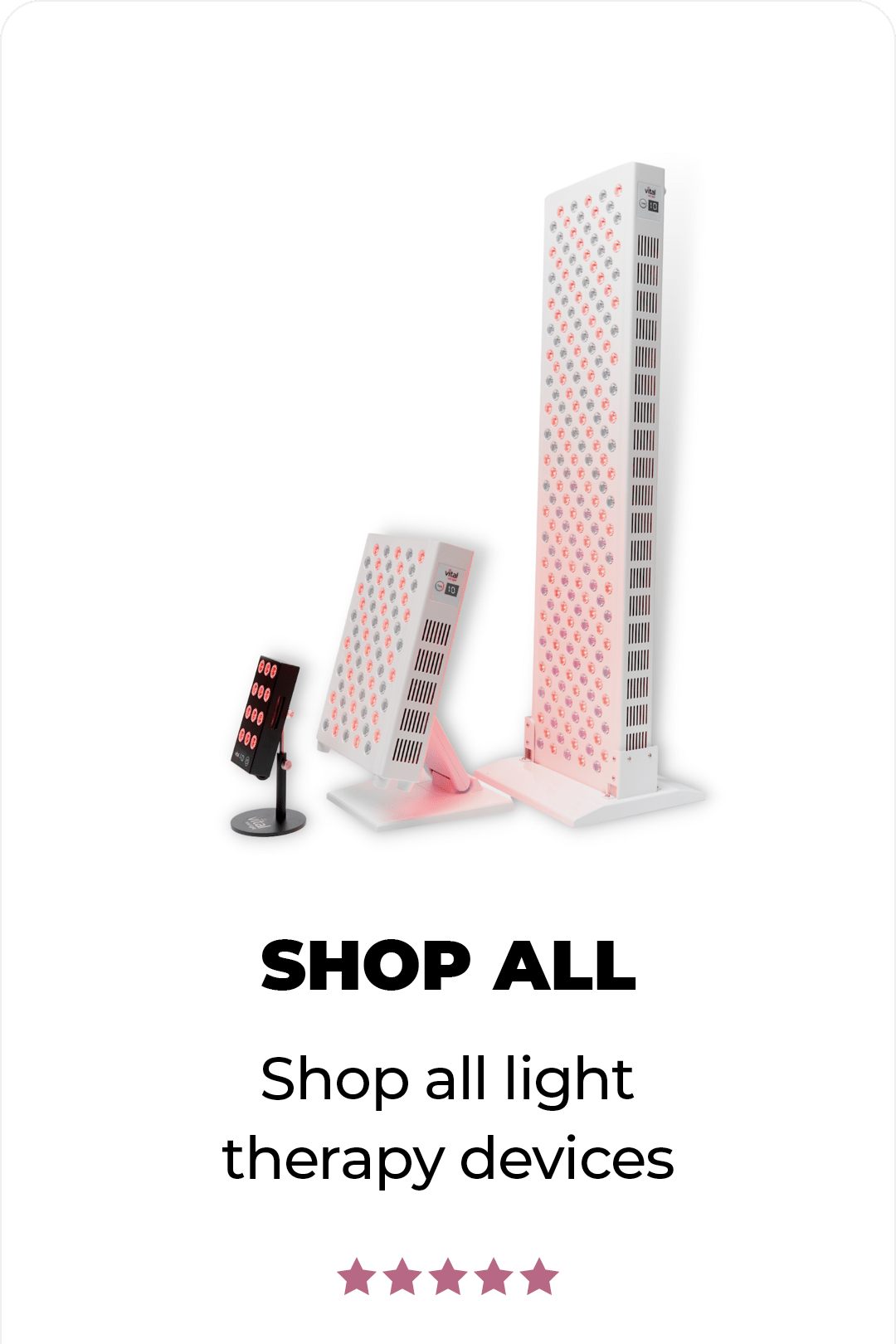The Science of Red Light Therapy
Learn About Red Light Therapy & How it Works
By utilizing the natural healing power of red and near infrared wavelengths, you can improve the way you look, feel, and live.
Why Vital Red Light?

Safe & Easy UV-Free Treatments
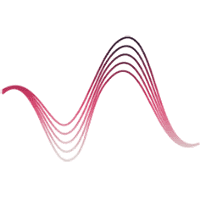
Proven Red & NIR Light
Highest Power (Irradiance)
Get Results or Your Money Back
Optimized 10-Minute Sessions
Backed by 5,432 Studies

The Science
What is Red Light Therapy?
The 101 on RLT is this: light therapy– also known as photobiomodulation — is the practice of using a medical-grade LED light to deliver beneficial wavelengths of light to your skin and cells.
Red light therapy is made up of two very specific wavelengths of light — red light (measured at 660 nanometers) and near-infrared light (measured at 850nm).
These two wavelengths are naturally emitted by the sun, and have been clinically proven to stimulate and support mitochondrial function in your body. See all the science-backed benefits.
Did you know?
Red Light & Mitochondria
A key mechanism of red light therapy is to trigger the energy generators of your cells,
known as the mitochondria to produce more:

Adenosine Triphosphate

Reactive Oxygen Species

Nitric Oxide
all crucially involved in the body’s recovery process and produce real health benefits.
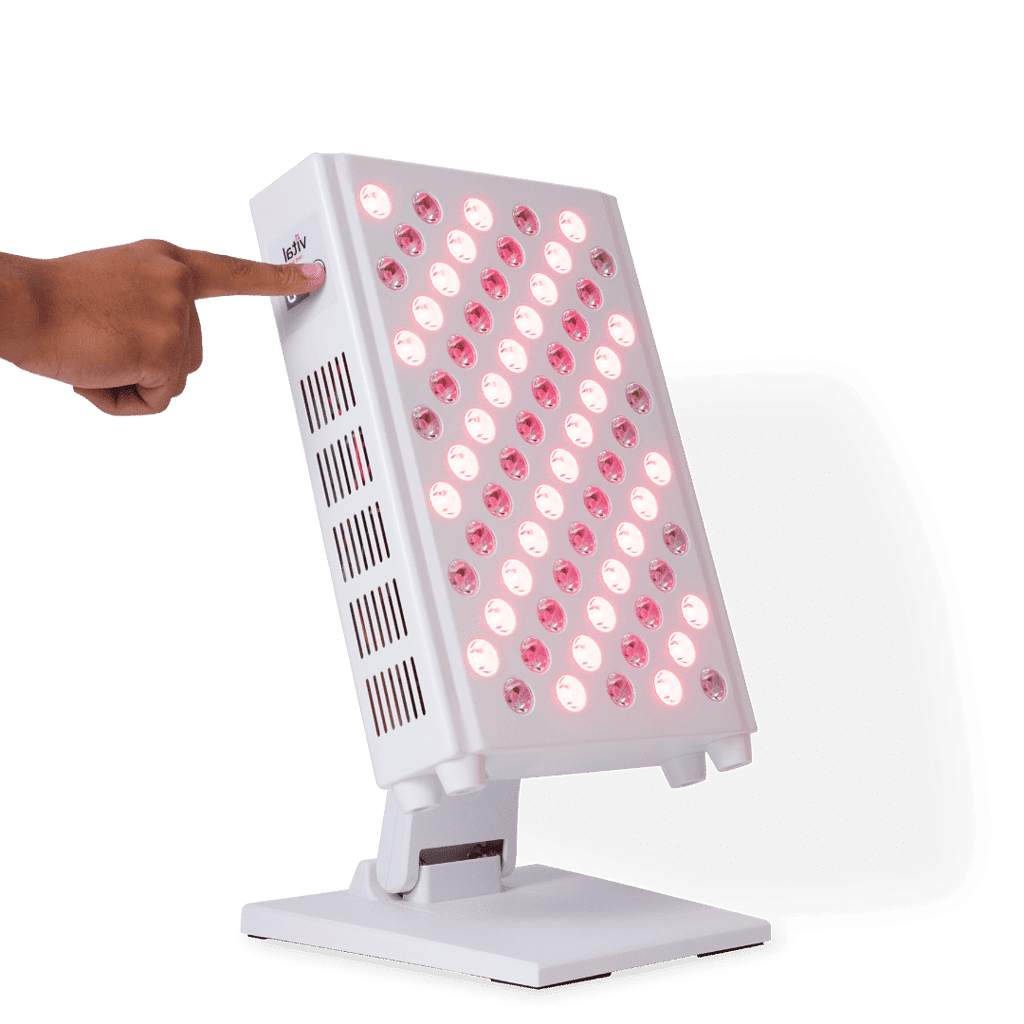
The Science
Why Do We Need Healthy Light?
Just like we as humans need food, water, and oxygen to function properly – we also need healthy light. Sunlight regulates our brain’s chemistry and vital circadian rhythms that control appetite, energy, mood, sleep, libido and much more.
Every metabolic process, every enzyme reaction, muscular movements, the digestion of food, and the burning of fat are all biological processes that are augmented by natural light energy.
We need an abundance of natural light to look, feel, and live our best – and red light therapy benefits are here to help. Learn more about light and health here.
So, What Are the Benefits of Red Light Therapy?
Red Light has been used in luxury spas for years because of the skin benefits. Using red light therapy on your face has been clinically proven to improve skin complexion while promoting skin rejuvenation.
Therapeutic red light treats the root cause of many skin issues by stimulating natural collagen production, reducing inflammation, and enhancing blood flow. Because of this, red light therapy can be used for ant-aging, fine lines & wrinkles, acne & acne scars, sunspots and stubborn skin conditions such as eczema, rosacea, psoriasis and sunspots.
Red light therapy basically gives you the power to work out harder, faster, and with less pain. By getting your cells to create energy on a high octane level, you can achieve maximum performance.
Muscle tissue (including your heart) has more mitochondria than any other place in the body because it is used to power all sorts of movement. This means that your muscle tissue is particularly responsive to high doses of red and infrared light.
Using red light prior to working out is a way to pre-condition your body to support increased strength and stamina. While using red light directly after exercise can speed the recovery process, accelerate muscle adaptation during workout, along with reducing pain and inflammation from a strenuous workout. Here you can find a meta-analysis that includes the findings from 46 human-clinical trials as it relates to red light therapy and fitness.
Using red light therapy in the morning will make your mind sharp and head clear. New research is also showing how shining red light on your head and brain cells may improve cognitive functions like memory and executive function. The study showed that people were able to perform difficult tests with less cognitive effort and difficulty — meaning that people could be able to perform tasks that require more brain power easier.
Another study found red and near-infrared light therapy also increased executive cognitive function in young healthy adults, providing hope that further studies find that red and near-infrared light therapy may provide a hopeful treatment in the fight against Alzheimer’s disease, as well as prevention.
Red light therapy has shown immense potential as a natural treatment to pain and inflammation without the risks of pharmaceuticals. Red light therapy alleviates chronic inflammation by increasing blood flow and by increasing the body’s natural antioxidant defenses.
Inflammation is natural and can be beneficial, but chronic or uncontrolled inflammation can lead to pain and other problems. Red light therapy sessions help me manage inflammation so that I can heal more quickly and efficiently with every 10-minute treatment.
Mental health is A huge problem in society today. And many people do not want to take pharmaceuticals, so they are turning to red light therapy. New research is showing how shining red light on your head and brain cells may improve cognitive functions like memory.
RLT can also help eliminate fatigue (partially by working to support the thyroid), support a balanced mood, and even help with depression and anxiety. In a recent study, 74% of participations saw a remission in their depression or anxiety after 30-days of red light therapy treatment.
Mental health is A huge problem in society today. And many people do not want to take pharmaceuticals, so they are turning to red light therapy. New research is showing how shining red light on your head and brain cells may improve cognitive functions like memory.
RLT can also help eliminate fatigue (partially by working to support the thyroid), support a balanced mood, and even help with depression and anxiety. In a recent study, 74% of participations saw a remission in their depression or anxiety after 30-days of red light therapy treatment.
Ever wonder why you feel so good after watching the sunset? This is because during sunset, the sun is emitting the highest levels of red and near-infrared light. In the evening, these wavelengths signal to your body that it is time to wind down and prepare for sleep.
In clinical studies, red light has been shown to have beneficial effects on sleep and other physical properties that help promote relaxation and rest in the evenings while offsetting harmful blue light exposure during the days. Clinical research is also showing that red light therapy can improve sleep quality and duration, and help people produce more of their own melatonin – also known as the sleep hormone.
Mitochondria play a central role in weight loss as well, so using red light after working out has been proven to accelerate muscle recovery, stimulate metabolism, and even reduces the appearance of cellulite.
RLT is quickly becoming the next big thing in the weight-loss world with even the most well-known gyms like Equinox using Vital Red Light devices. In a recent clinical trial, using red light therapy was twice as effective in burning fat when combined with working out. Doing 10 minutes of red light therapy after exercise is the best way to do it.
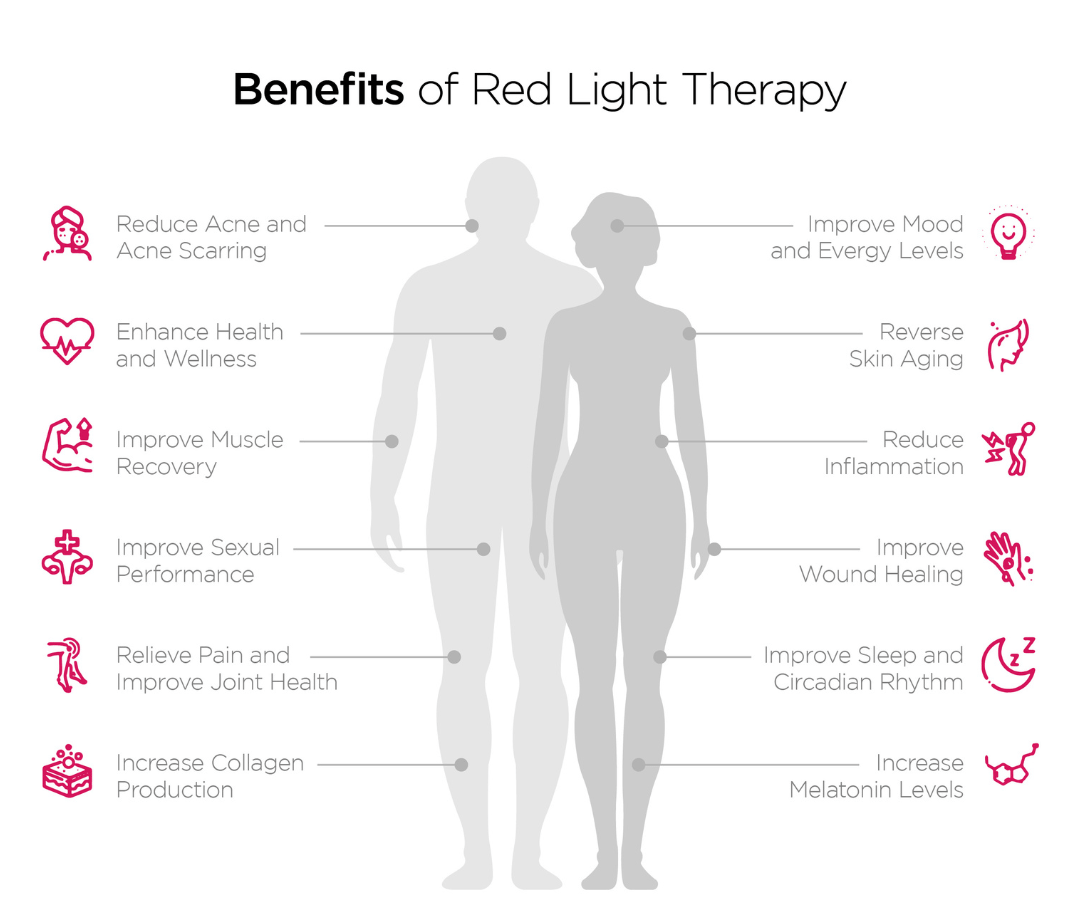

Scientifically Proven Light Therapy Benefits
Vital Red Light device were developed on a technology pioneered by NASA. Red light therapy has been studied in over 500 human trials and 4,000 lab studies to date. Treatments deliver all of the beneficial wavelengths of light, without the harmful UV rays.
Benefits Supported by Science and Research
This is Why Athletes, Wellness Experts & Doctors Choose Vital Red Light
Red Light Therapy are loved by many for their wide variety of benefits. Hear from experts in health as to why they use & recommend Vital Red Light.
From better sleep, clearer skin, reducing stress, improving performance, and better sleep – everyone has a reason they love Vital Red Light.
Frequently Asked Questions
Yes. Red Light therapy is safe and free of ultraviolet (UV) rays. Unlike using other laser therapies or tanning beds, red light therapy does not use UV light, which is the cell mutating and cancer causing light.
All Vital Red Light therapy devices are backed by clinical science, are 3rd party tested, have the lowest EMF output, and are guaranteed to be effective.
Vital red light uses therapeutic Red and Near-Infrared (NIR) wavelengths to penetrate deep into your skin and body for proven healing benefits. As your body soaks up the natural light, your mitochondria become activated in producing energy for a wide range of functions. Learn more about the benefits here.
Our wavelengths of light have been studied in over 500 human trials and 4,000 lab studies to date. It is backed by thousands of peer-reviewed medical studies and clinical trials that event conducted for the past few decades. Learn more about the science here.
Red light therapy has been shown to offer a wide range of benefits, including improved skin health, reduced inflammation and pain, enhanced muscle recovery and athletic performance, and improved sleep quality. Additionally, red light therapy has been studied for its potential to treat a variety of medical conditions, including psoriasis, eczema, and chronic pain. With regular use, many people experience increased energy and an overall sense of well-being. Learn more about the benefits here.
You can experience results as early as after the first treatment session with red light therapy. To get the most out of your Vital Red Light, consistency is key. We recommend once daily use, although using your device 2-3 times a day may be beneficial for symptomatic areas. Learn more about using red light therapy at-home here.
Red light therapy can be a safe and effective alternative to other treatments that use harsh chemicals or UV radiation. For example, red light therapy can replace saunas as a way to improve circulation, reduce inflammation, and promote relaxation. Unlike saunas, which can be expensive and require special installations, red light therapy devices can be used in the comfort of your own home, and are often more affordable.
Red light therapy may be a good choice if you’re looking for a non-invasive, safe, and effective way to improve your overall health and wellness. It’s important to note that while red light therapy is generally safe for most people, it’s always a good idea to speak with your healthcare provider before starting any new treatment, especially if you have any underlying health conditions.
We offer a full 30 day return period, so you get to try your device out at no risk. We don’t charge any restocking fees. If you are not happy with your light for some reason, send it back for a full refund. All of our products come with an automatic 2-year warranty.
Download Our FREE E-Book
Download our official Red Light Therapy guide with over 1,214 clinical references on the power of Red Light Therapy.
